TYPES OF BINDING
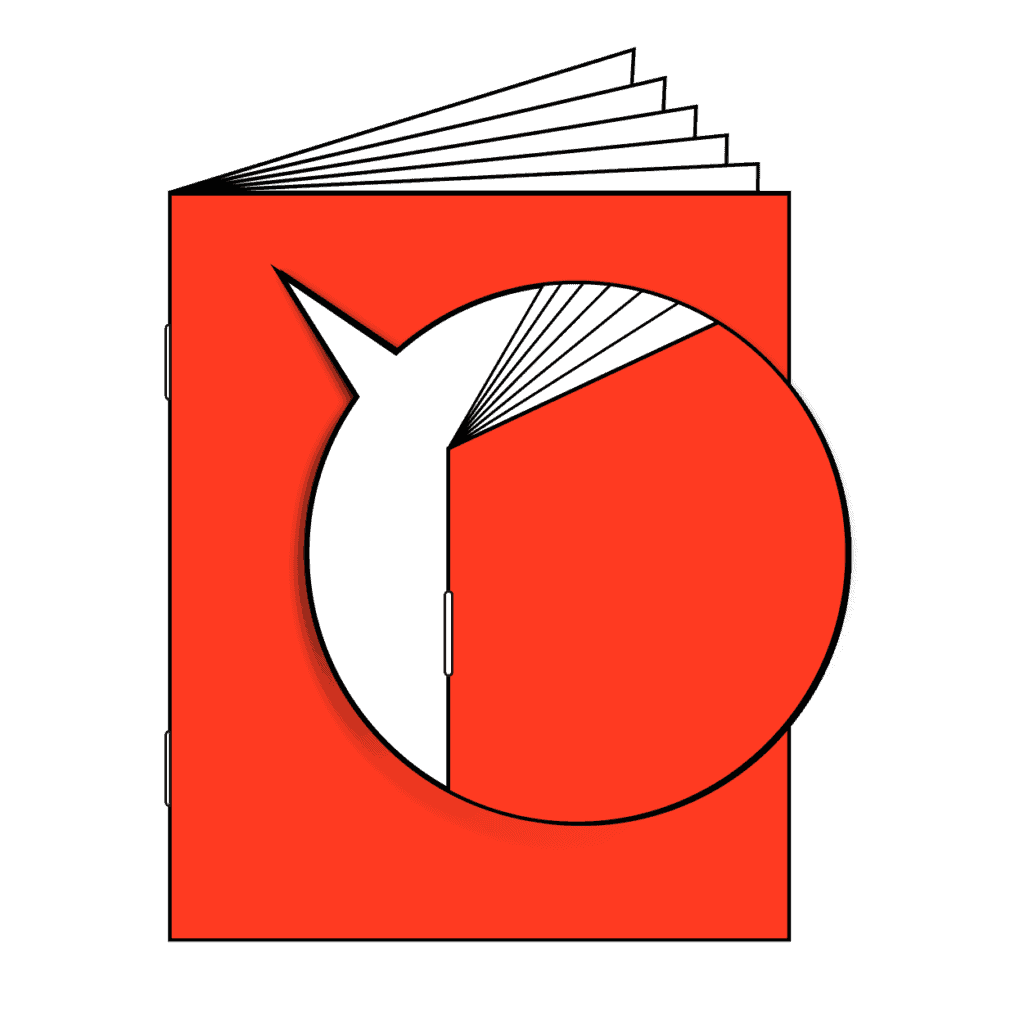
Saddle Stitch Booklets
Saddle-stitched books are made by folding sheets of paper, stacking them together and stapling them through the fold line along the spine. Each folded sheet is 4 pages with a maximum of 96 pages (24 sheets). Saddle-stitching is commonly used for booklets, brochures, pamphlets, magazines, and other types of publications with a relatively small number of pages. It’s a cost-effective and efficient binding method.
Twin Loop Wire-O
When twin loop, or “wire-o”, binding is used, it generally refers to a metal wire that has been fixed to hold the cover and text in place through punched holes on its binding edge. One of the biggest advantages of twin loop binding is the ability for the text to lay completely flat and still have the spreads line up evenly.
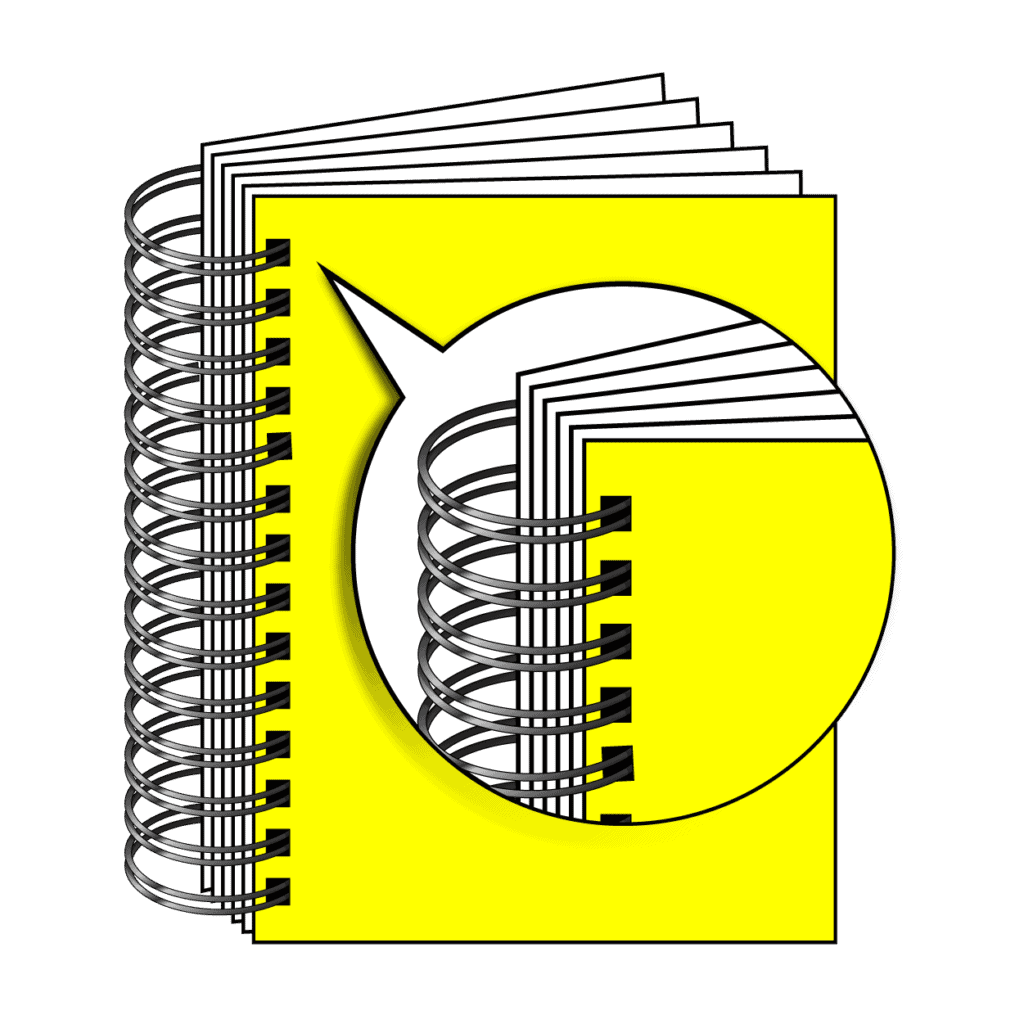
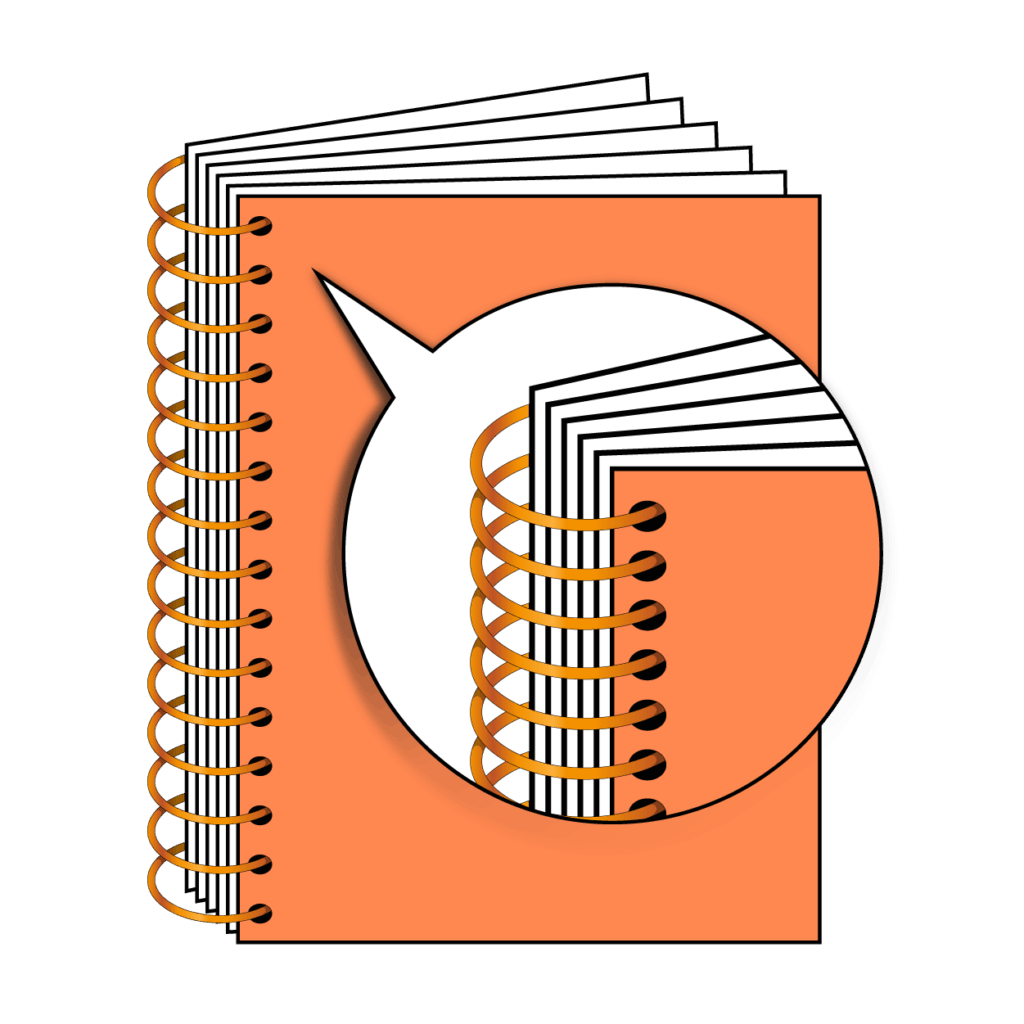
Spiral Bound: Plastic Coil & Metal Single Wire
Our spiral binding has the option of either plastic coil, which utilizes a plastic coil to hold everything together, or single metal wire, which does the same only with wire. Both coils
are placed within a line of holes along the binding edge that have been punched in the cover and text stock. The coil chosen is matched to fit the desired thickness of the book, and is threaded through a series of small holes on the book’s bind edge of the text and cover.
Perfect Bound: Softcover/Paperback
Perfect bound books are created by applying a strong adhesive glue (PUR) to the binding edge of the content and adhering the cover. The advantages of perfect binding are professional appearance, durability and cost effectiveness for longer runs. Perfect Binding is commonly used for novels, catalogs, journals, directories and manuals.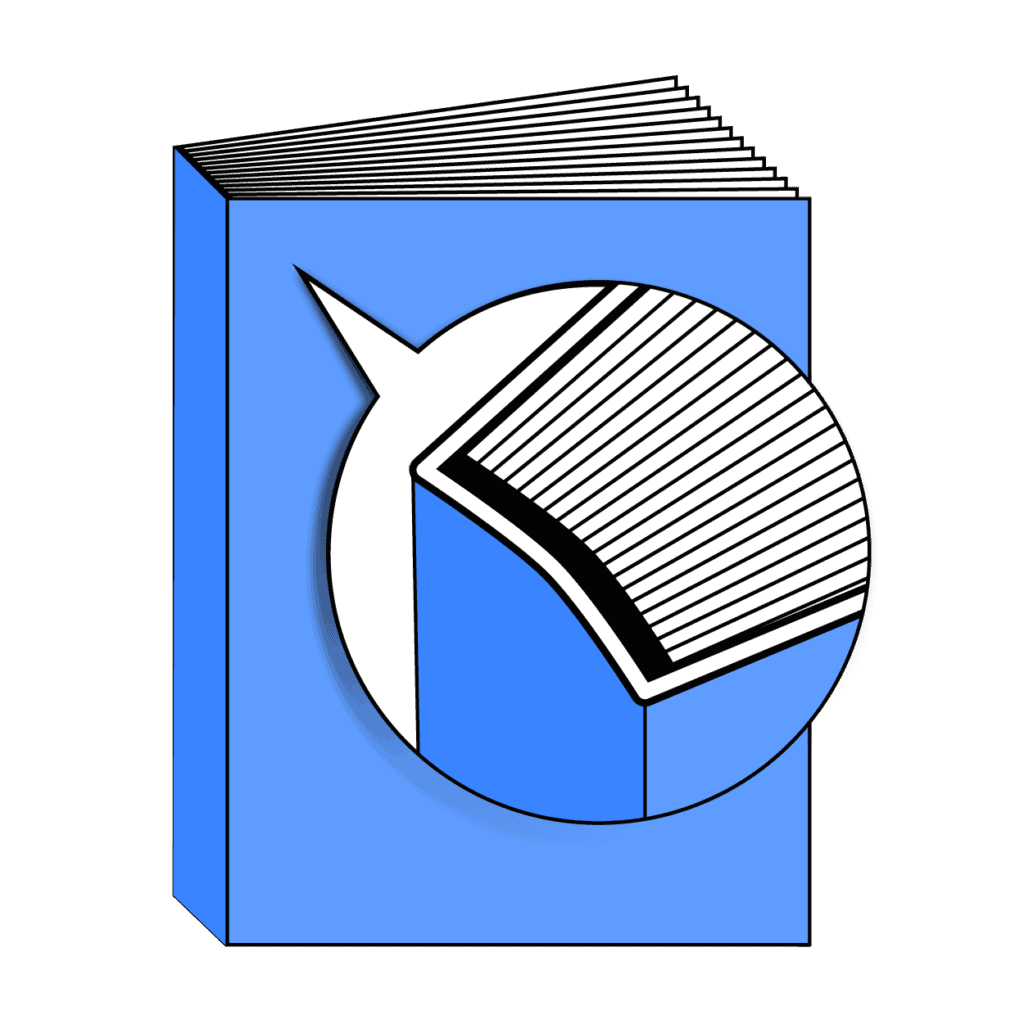
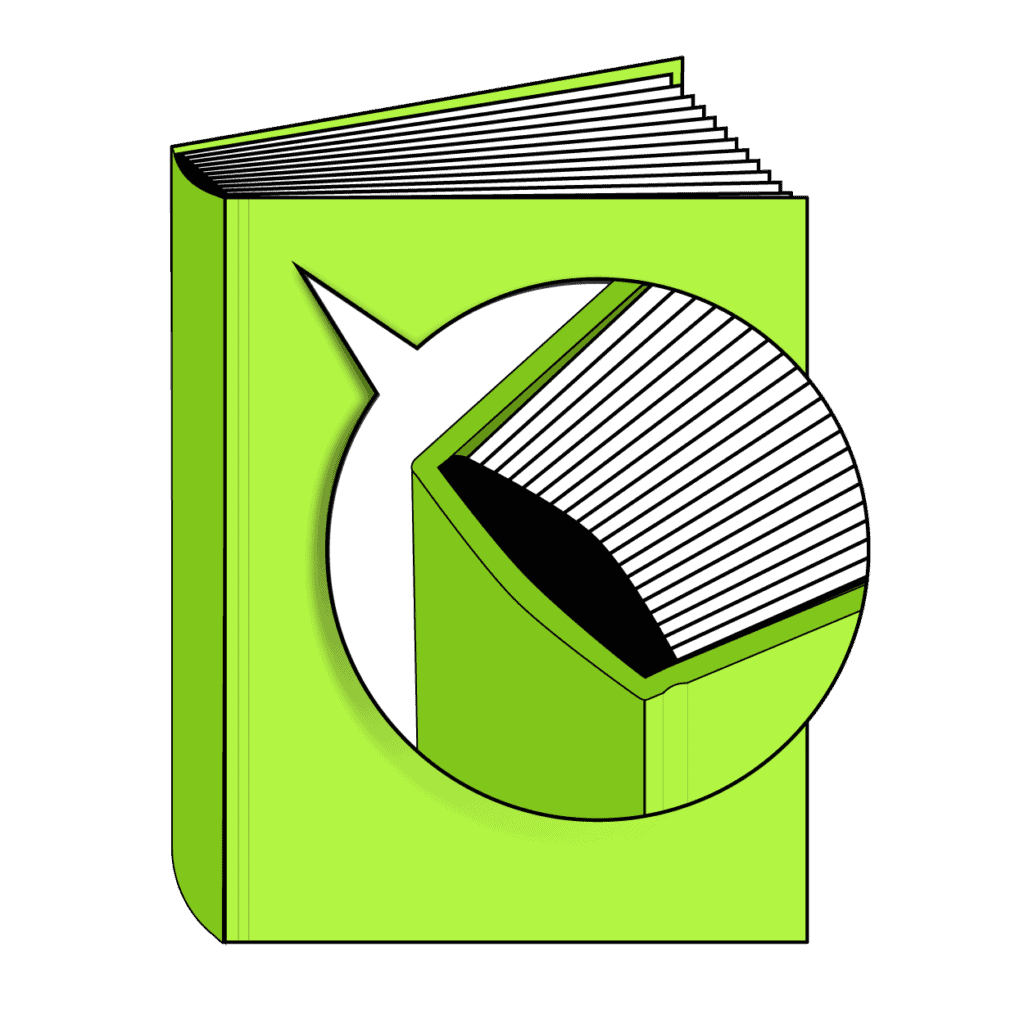
Perfect Bound: Hardcover/Casebound
Adhesive Case Binding books are made by producing a perfect bound book and adhering it to a case cover made by wrapping 88pt board with a laminated paper cover. The advantages to Adhesive Case binding are upscale appearance and extra durability. Adhesive case binding is best suited for Coffee Table books, Presentations, Limited Edition Books and Children’s books.BINDING RECOMMENDATIONS
What kind of book are you ready to create?
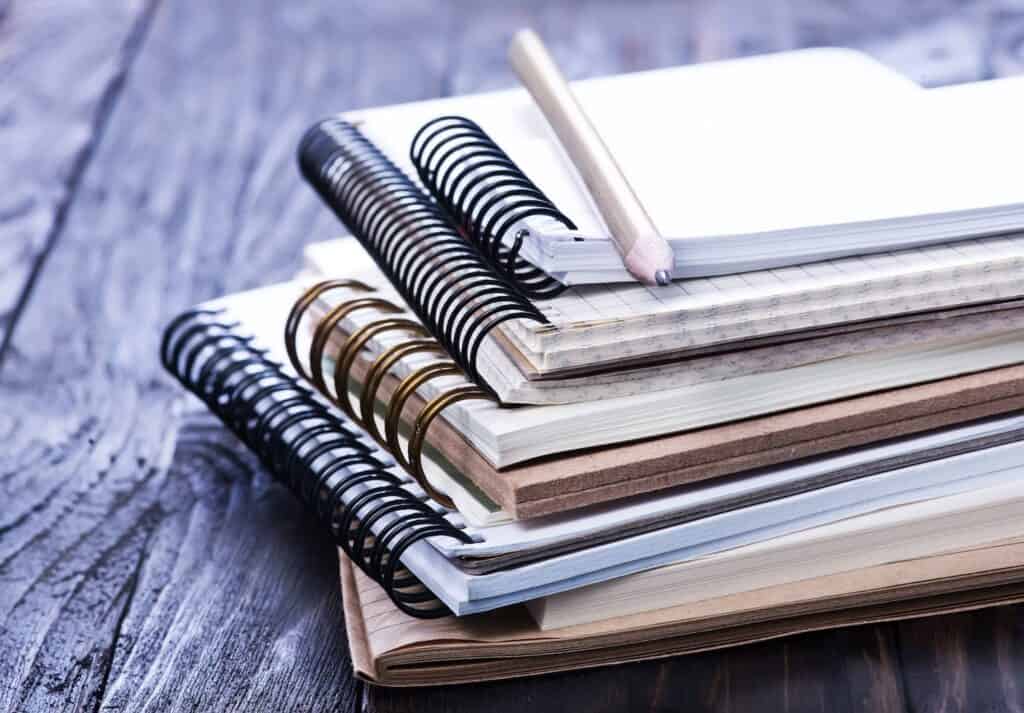
Planners
Planners are often twin loop or softcover perfect bound as a close second. Twin loop generally works a bit better as it lays completely flat while having the spreads able to line up completely. This is convenient for various trackers and note taking, if applicable to your journal. 10pt – 12pt for the cover will work just fine, with 70# offset for the text; 70# holds up well for writing and/or drawing on, making it an excellent option.- Binding: Twin Loop or Softcover
- Cover Stock: 10ptC1S or 12ptC1S
- Text Stock: 70# offset
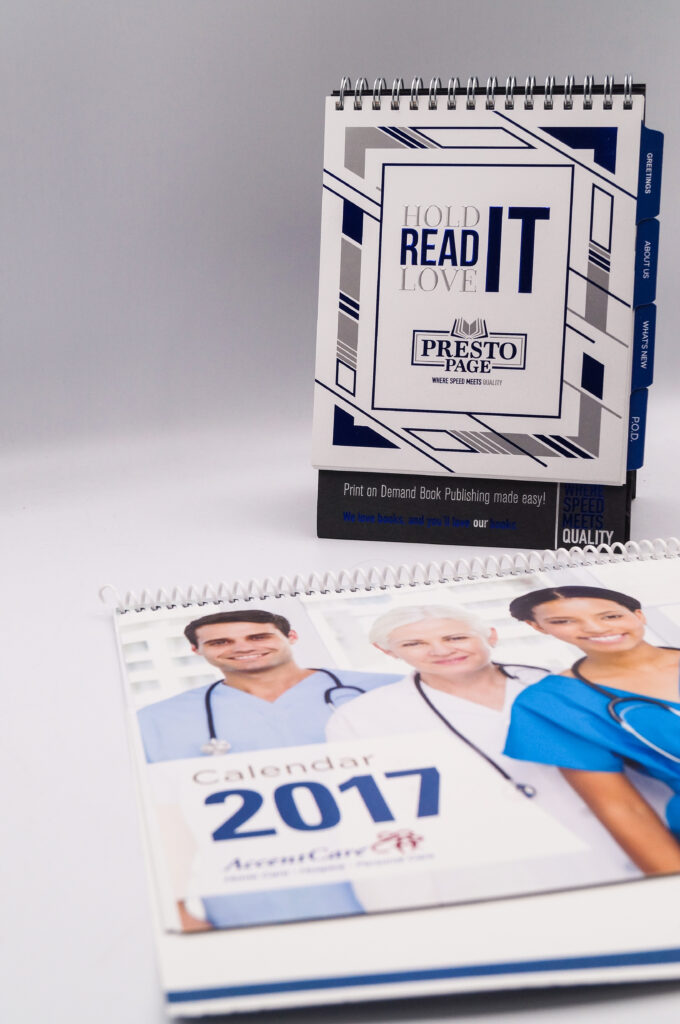
Calendars
Should you be looking into printing a calendar, spiral bound or twin loop are the top contenders for binding, with twin loop being slightly more popular. This will allow the calendar, should you like it to hang or lay, be flat at all times. Text stock would likely be 70# offset (if you have plenty of room for writing, or don’t feel the need for coated pages), 80#, or 100# coated. Writing on coated paper may be tricky at times, specifically when writing in pencil, but not impossible– it really depends on how much writing is expected. Cover may be self-cover (same stock as the text pages) or 10pt.- Binding: Twin Loop or Spiral Bound
- Cover Stock: 10ptC1S or Self Cover (same stock as text pages)
- Text Stock: 70# offset, 80# coated, or 100# coated
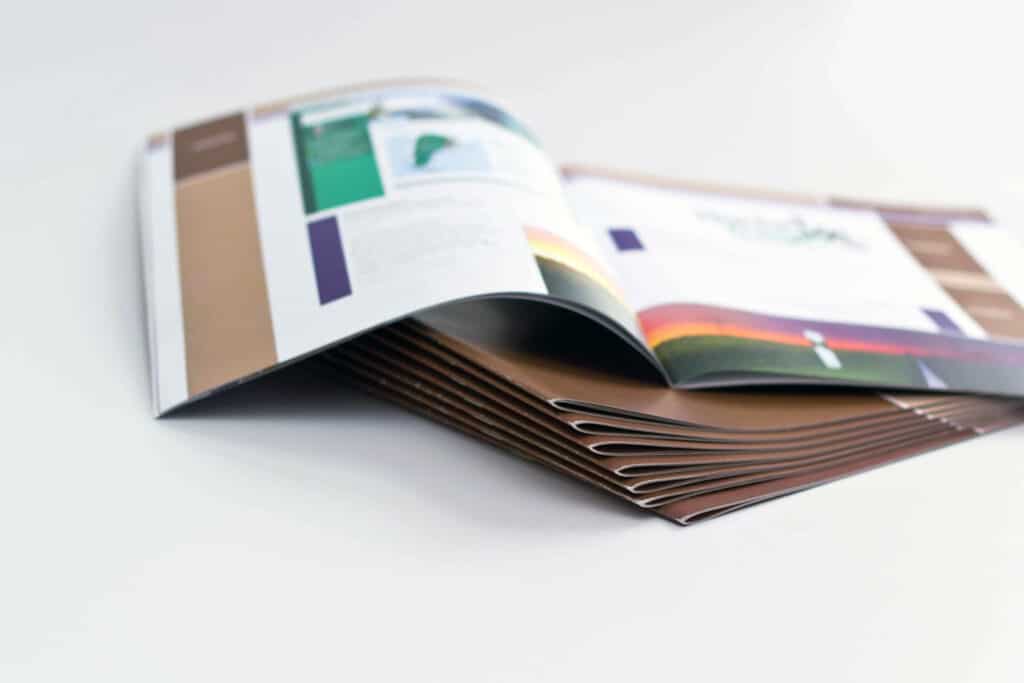
Magazines/Pamphlets
Saddle stitch binding might be your best option in regards to magazines or pamphlets, depending on your page count and intent, with a self-cover (same stock as the text pages). Alternatively, softcover might also work well, likely with a 10pt cover. Text pages, should there be a lot of imagery, would be best to go for 80# or 100# coated stock.- Binding: Saddle Stitch or Softcover
- Cover Stock: 10ptC1S or Self Cover (same stock as text pages)
- Text Stock: 80# coated or 100# coated
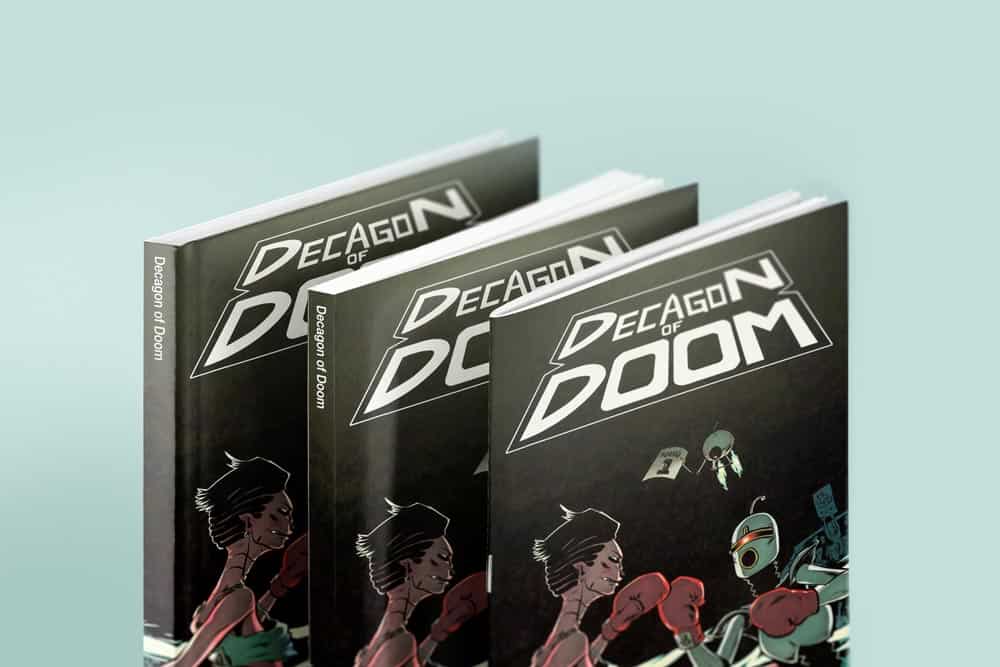
Graphic Novels
If you’re looking to print your graphic novel, softcover or hardcover might work best for you! For the softcover, a cover of 12ptC1S (generally, C2S is if there is printing on the inside cover or personal preference) would work nicely! Additionally, 80# or 100# coated paper is highly recommended, as both would hold up best to pages heavy on images.- Binding: Perfect Bound; Softcover or Hardcover
- Cover Stock: 12ptC1S or 12ptC2S (generally, C2S is if there is printing on the inside cover or personal preference)
- Text Stock: 80# coated or 100# coated
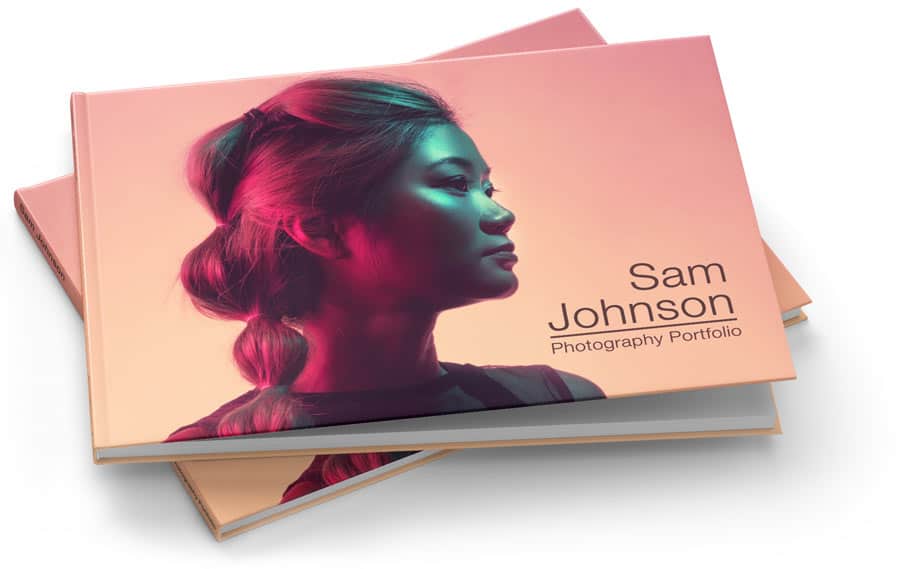
Photography Books/Coffee Table Books
Hardcover binding is the likely go-to for photography or coffee table books. Giving them a high quality finish, and would go well with 80# or 100# coated paper for the inside to best bring out the imagery.- Binding: Hardcover
- Cover Stock: 100# Gloss Text, Cloth, or Faux leather
- Text Stock: 80# coated or 100# coated
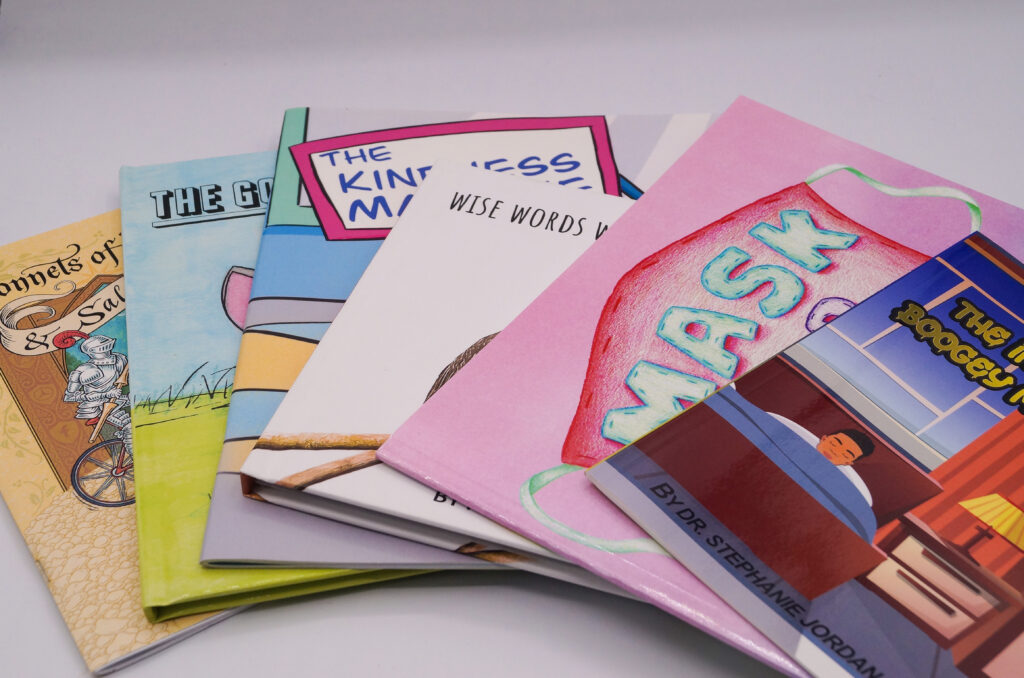
Children Books
Children’s books can be found in a variety of different bindings, and depending on the page count may vary in what would work best for yours. The most popular, however, are usually perfect bound, in either softcover or hardcover, and saddle stitch. If the page count is too low, we would generally recommend switching to saddle stitch, but perfect bound offers a fairly all-encompassing range. Given that most children books include many images, we would recommend at minimum 70# offset, but more likely 80# or 100# coated. Cover stock would likely be 10pt or 12pt.- Binding: Saddle Stitch or Perfect Bound; Softcover or Hardcover
- Cover Stock: 10ptC1S
- Text Stock: 70# offset, 80# coated, or 100# coated
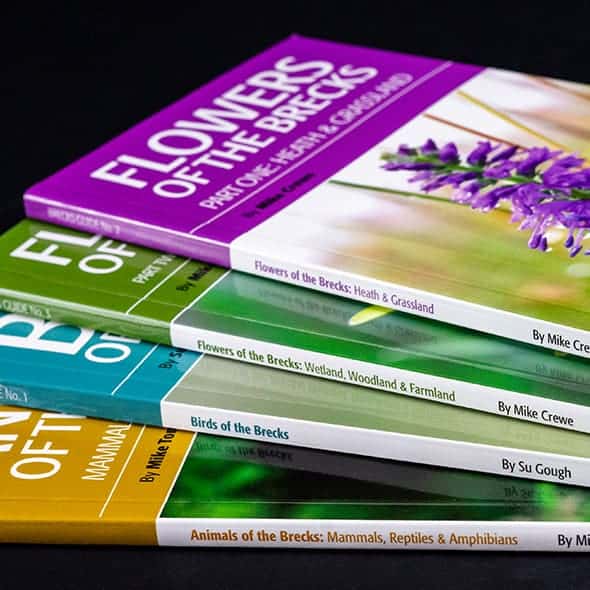
Textbooks
Given the nature of use and inevitable wear and tear, hardcover would suit textbooks rather well, although depending on the intended audience, softcover could also be a good choice! Text stock, depending on the amount of images and/or diagrams, could range from 60# offset to 100# coated. If there is little ink/toner coverage (mostly text, maybe a few diagrams) 60# offset would work just fine; the more coverage, the thicker the stock we would recommend.- Binding: Perfect Bound; Softcover or Hardcover
- Cover Stock: 12ptC1S or 100# Gloss Text
- Text Stock: 60# offset, 70# offset, 80# coated, or 100# coated
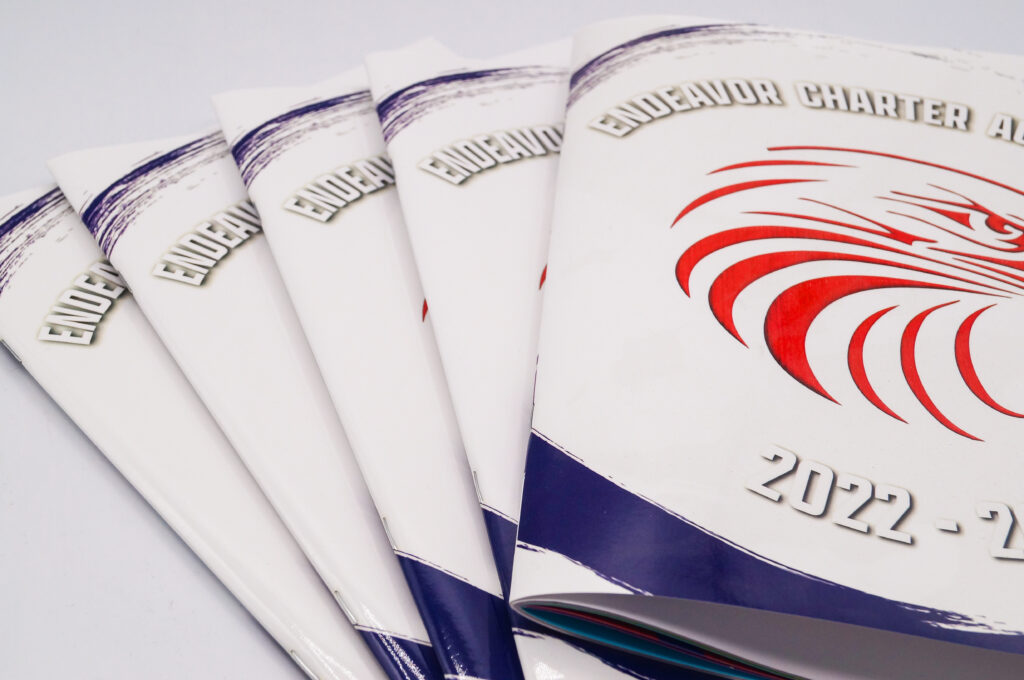
Yearbooks
Yearbooks have a few options that could work. If the page count is small enough and divisible (or close to being divisible) by 4, saddle stitch might be the binding for you! Otherwise, perfect binding is also a popular option; especially as for yearbooks many look for a lasting impact, which is best suited to hardcover. Coated paper in either 80# or 100# are most often used in particular.- Binding: Saddle Stitch or Perfect Bound; Softcover or Hardcover
- Cover Stock: 10ptC1S or 100# Gloss Text
- Text Stock: 80# coated or 100# coated
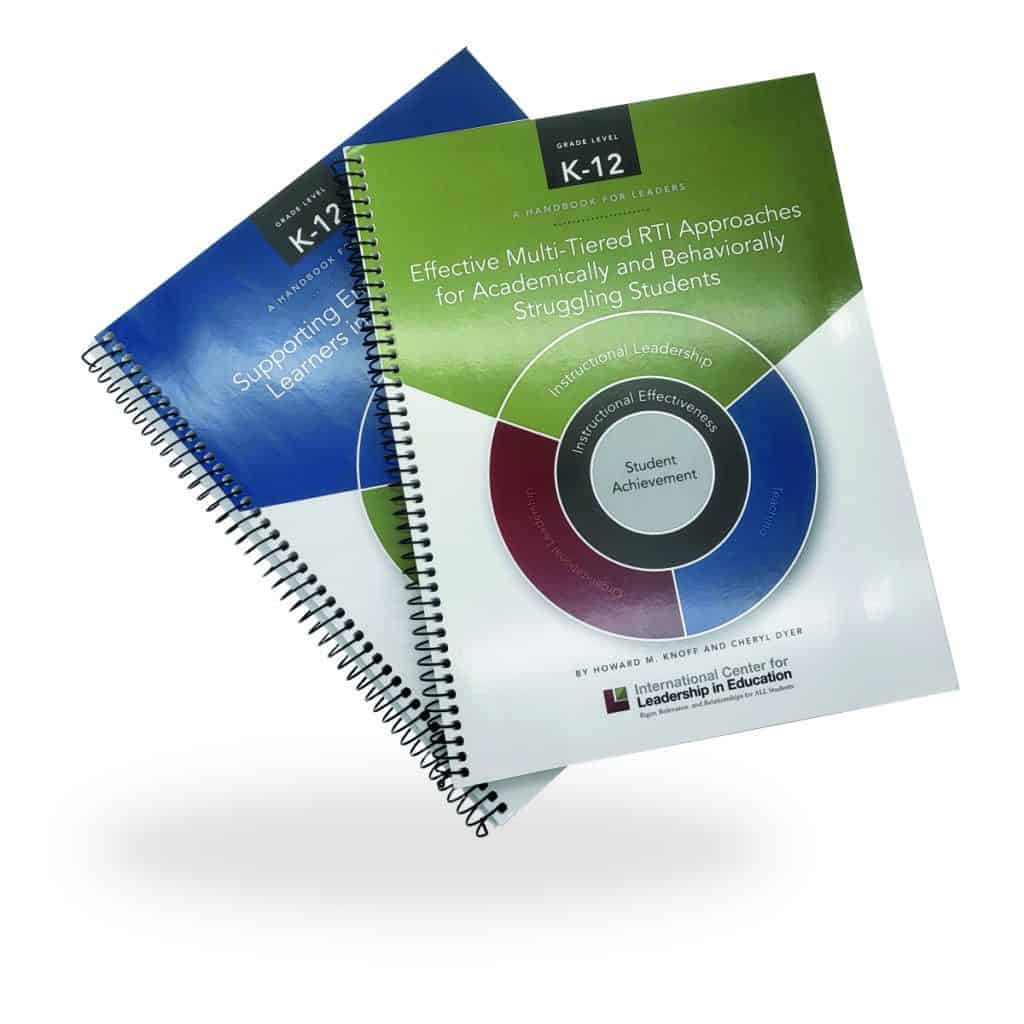
User Manuals/Instructional Guides
Often, user manuals or instructional guides can be found as saddle stitch or bound as softcover with 50# or 60# offset, as they are generally all black and white with few images. Self cover (same stock as the text pages) or 10pt cover stock may suit, depending on the use and functionality.- Binding: Saddle Stitch or Softcover
- Cover Stock: 10ptC1S or Self Cover (same stock as text pages)
- Text Stock: 50# offset or 60# offset

